#Giffey comic
Text
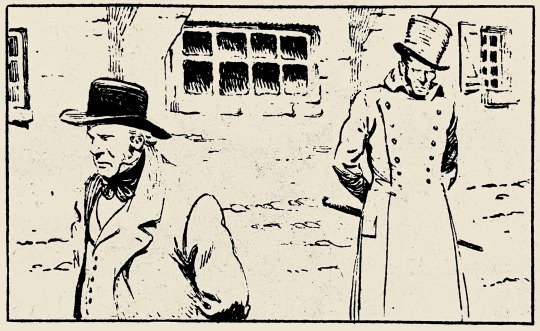

Les Misérables, French Comic by Rene Giffey (1949)
They are too embarrassed to say Hi to each other.
212 notes
·
View notes
Text
Pierre Dubois: An introduction
Have you heard of Pierre Dubois?
If you live in a French-speaking country and have interests in fantasy, you probably have. Else, you might have never heard of the guy.
I discovered Pierre Dubois, like many other people, through a trio of big encyclopedias with bizarre, beautiful and disturbing illustrations - each one centered around a different “type” of supernatural being. The Great Encyclopedia of Lutins (Imps/Dwarfs), The Great Encyclopedia of Fées (Fairies), and the Great Encyclopedia of Elves. This trio of encyclopedias, the product of “twenty years of research”, and released in the 1990s, became a MASSIVE hit present in every library and every bookstore across France. And I will speak of them in relation to fairytales - but we need to talk about the man himself.

Who is “Pierre Dubois”? He is the first and most prominent “elficologist” of France (in French, “elficologue”). This word, which designates the study of elves, was originally a joke-word invented by Dubois during an interview about what he did in life - but it soon became a term everyone used to describe him, as a result he also used it himself, and soon it became official. The “elficologie” (elficology) became the word used to designate all those that studied elves and fairies, the study of what Dubois himself called “Faerie”.
Pierre Dubois is a story-teller, a writer and a scholar who was always fascinated by fairies, folklore and fairy tales. Before the enormous success of his Encyclopedias, Pierre Dubois was mostly known for his work on both radio and television shows: since he was a collector of legends and folklore from every corner of France (and later every corner of Europe), he put it to good use and brought all the legends and folktales he kept finding to the radio or the television - these radio shows of his went on for nearly thirty years. He also started to do some BD (bande-dessinée, the French equivalent of comic books) work but it wasn’t that successful (his BDs really boomed after the Encyclopedias however).
With his work and Encyclopedias he really created a true “fairy craze” as he woke up back a passion for all the bizarre creatures and unusual monsters of folklore, and ever since all of his books have been hits - because he wrote many more books and encyclopedias, about trolls, about the folklore of the months, about ghosts... He is even called “the Levi-Strauss of the fabulous”. Pierre Dubois himself is a very excentric and bizarre man with unusual habits. He likes to write by hand, refusing to use computers or even typewriters. His first true reads, during his teenage years (as his father during his childhood disliked seeing him reading and wanted him to focus on more “useful” things) shaped strongly his view of the world: Jean Ray and Sherlock Holmes. As a kid he collected pirate stories, the Grimm fairy tales and the Bob Morane novels , and while he did read some comic books (like Giffey’s Buffalo Bill) he had to do it in secret due to comics ot being allowed in his family. He had a brief carreer as an illustrator before starting to write - and he was an illustrator for the American magazines “Eerie” and “Creepy”. His first attempt at having a book publish was quite unique as, at fiftee years old, he sent his first book to an editor written with a goose feather on parchment and bounded by leather ; and when he got refused, he sent the manuscript again... WITH ILLUMINATIONS AND BOOKMARKS MADE OF HERBS. During the ten years he spent collecting legends and fairy tales in remote corners of France and countryside areas where witches and medecine-men were still a thing, he took the habit of going around dressed all in black, with a cloak, wearing his hair long, and with his pet raven on his shoulder (pet’s name was Nao by the way) - which actually did intrigue and fascinate people so much it eased a lot his collecting work. Oh yes, and his personal answer to who was Jack the Ripper is that it was Peter Pan - an idea he allowed Régis Loisel to use in his own BD about Peter Pan.
And to such a strange and unusual man, corresponds a strange and unusual writing style. Pierre Dubois has strong likes and dislikes. He admires Jean Ray that he hails as one of the best writers of all times ; but he actually dislikes Tolkien and prefers to him Lord Dunsany. Despite his huge “fae” work, he actually doesn’t like much fantasy, but is a die hard fan of magic realism. His biggest influences are Bram Stoker, Charlotte Brontë, Mary Webb, Lewis Carroll, Walter Scott and Robert Stevenson. Similarly, his tastes of illustrations draw him towards Arthur Rackham, Richard Doyle and Gustave Doré. As for his writing methods, Dubois in his own words can spend “one hour on one sentence”, and he compares his writing to an “alchemy”, as he tries to create sentences so that they would resonate like “magical incantations” or “beautiful music”. When he writes, he always places himself in a specific ambiance - he surrounds himself with photographs, pictures, objects or natural elements tied to the subject he is writing around, all the while listening to “repetitive” music to place himself almost in a trance (such as Gavin Bryars’ music).
And he became so famous and important he participates to a lot of folkloric festivals, literary salons, he does public story-telling to children in French castles (children usually like him due to his unusual appearance, as he is a big fat bearded guy with wild hair, he is often compared to “an ogre”, “a giant” or “Hagrid” by kids, while Dubois describes himself as a mix between Captain Hook and Peter Pan) ; and he notably is the chancelor of the “Center of the Arthurian Imagination”, a big cultural association/center of the Bretagne area dedicated to keeping alive the Arthurian legends of France.

Anyway that’s all for the public image. But to speak of my more personal and prosaic experience with this man, I’ll speak of his Encyclopedias, the peak of his fame.
How did Dubois create those encyclopedias? He compiled everything he could find. His own personal collection of folktales and fairy tales, but also a HUGE compilation of various books from different languages and eras (many of them I could’t find back, either because they are THAT RARE, either because they don’t exist anymore - or maybe even never existed) ; and by everything I mean everything. Fairy tales, folktales, folklore, legends of various kinds, from every country of Europe and even from countries and cultures outside of Europe (Asia, America, Australia, Africa...). He also included folk rites, superstitions, actual historical facts and anecdotes, ghost stories, local beliefs, mythologies, pagan religions, monotheistic and “modern” religions, “folk-Christianity” as it developed itself in France though saint cults and unusual tales about angels, demons or the Virgin Mary...
And this is both one of the greatness and weakness of his Encyclopedia. It is great because by reading them you’ll have a HUGE side of the world’s culture in your brain and you’ll learn TONS of useful things and get tons of references. But on the bad side, he mixes gleefully witches, fairies, gods, ghosts from very different countries and eras in one big mix-mash without clearly defining the differences between them, and blurring the lines between everyone and everything. This is because Dubois has a very unusual way of presenting his research and descriptions: he doesn’t work in a “scientific” approach, he works with a “writer” approach. His texts are always very flowery, very poetic, using all sorts of words from the local term untranslated to old-fashioned names not used anymore, and when he can tell something through a story or an anecdote rather than a blank description or explanation, he will do it. The result is a fascinating reading experience that can conjure up visuals and ambiances like you can’t have anywhere else... but from personal experience, DO NOT TRY READING IT OUT LOUD! While it can be pleasing to read on your own, you really need to get the hang of his unusual phrasing and rythm, and I can tell you that trying to read his books to someone will turn the text into a boring and uncomprehensible mess because while the sonorities will be good in your head, you’ll need an extensive training to make them go out of your mouth in a pleasant way.
And while it is always a pleasure to have a Dubois book in your home because it is a poetic mine of info and stories, you will never actually see a Dubois book being used for any kind of serious folkloric research. Why? Because Dubois, as a true storyteller, likes to flesh out his characters, to invent new angles to explore legendary figures, to twist the traditional fairy tales. And so he will often for example theorize about what led to a monster being what it is, or what happened to a fairy after a given story. He will often add little trivial details in order to create a full “lifestyle” or “culture” of the species he describes. He uses humor or irony to describe the “fae folk” and so you can rarely read him in first-degree. And in his all-encompasing, all-including view of the “legendary” world he will materialize existing relationships between folktales OR invent them to give more “coherence” to his new Fae world. It isn’t uncommon for him to include in his stories other entities he describes in other articles as a background or side detail, thus creating a “fairy history” with its own chronology and an “elven genealogy” with its own magical evolution - these things never actually explicitely spelled out or described, but that the reader has to recreate by collecting the clues scattered throughout his books.
Because that’s what he does. A lot of re-creation, a lot of re-invention. At least he does that in these Encyclopedias. The result is an insanely fun read filled with discoveries of little-known folklore and a re-discovery of a entire world of the supernatural and a new “world-mythology”... But his claims need to constantly be checked and countered by more serious works if you want to do actual folkloric or historical research. Dubois is clearly a writer and a story-teller first and foremost. I do appreciate the enormous bibliographies he gives in each of his book, but I would love to see one day all the material he collected during his ten years-trip to France (I haven’t found it published anywhere however).
For me, I appreciate his Encyclopedias as an object of art, as a fantasy work and as a discovery/rediscovery of the “fae folklore”. I will never tell anyone to not look at them (especially since the illustrations are WILD). But I noticed that people tended to take his words in a way a bit too literal, repeating some things that are clearly Dubois’ inventions as if they were cultural facts, and so there should be a warning label when it comes to these VERY famous books.

And to end this introduction post, I’ll list there for the sake of the trivia some of the opinions and points of view Dubois defends.
# He is a great lover and defender of fairy tales, but he has a truly “folkloric” approach to them: he defends the idea that fairy tales are a product of popular culture, and that it existed since the dawn of humanity, its characters being inherited from the original goddesses and sorceresses of humanity. He interprets fairy tales as being allegorical stories about the cycles of seasons and the phenomenon of nature, with a cathartic function (such as providing hope and comfort during winter). He considers these tales and legends as being an encouragement to respect nature, and the result of a collective memory that is passed down from generation to generation, alongside the figure of witches that are for him the embodiment of all “our fears and anxieties”. He also explains how fairy tales are initiation tales that warn children of the dangers of the ogres and dragons, and encourages them to become allies and friends of the spirits of nature - though still keeping fairies as ambivalent entities.
# Pierre Dubois is very happy with the recent passion and success of the “faerie” genres and the “literature of the imagination”, he does believe that the fame of things such as The Hobbit, Harry Potter and role-playing games allows people to find back “the sense of the marvelous, of the epic, of the knighthood and the fairy tale”. However he does express one big regret, that “special effects replace magic and make the fantastical and spiritual disappear” from those stories ; he also likes to remind people that “fairies don’t like when we speak about them” and fears that there could be an over-abundance of fairy-related books and a “commercialization of the fairy”.
# He is a strong ecologist, though he isn’t so much concerned about stuff like climate change but rather believes how you need to listen and respect nature because only contact with nature can “wake up imagination” - he also likes to remind people how in legends fairies warn humans not to cut some trees or build on some lands before taking revenge on those not listening to them through natural disasters - as a result his motto is “If you hurt nature, it will hurt you in return” and he belives that some of the huge floods France knew in his lifetime were “fairy punishments”.
# He keeps preaching the virtues and powers of the imagination, especially towards children: he believes they should be soaked in drawings, theaters and songs to wake up their imagination, and he dislikes how for a long time in France all those activities were stopped around six or seven years old, the “age of reason”, due to them becoming “useless”. He insists that adults should never deny the emotional or imaginary sides of life, and he also strongly dislikes any kind of children literature that is “educative and realist”.
# Finally, Pierre Dubois strongly dislikes today’s society and the modern world due to denouncing the over-abundance of “scientism” and “materialism” in the ruling classes, and how modern culture relies on greed and selfishness. He claims that the “waking up” of the imagination and the “revival” of the Faerie was in France a natural extension of the May 68 revolt (I’ll let you search for that on your own), and he has a great interest and kinship with two type of sub-cultures: the gothics, and the punks, due to him sharing with them the idea of an unconventional freedom. Dubois defends the idea that the fairies are the symbol of the “rebelled ones” and of the “wild ones who say no to an established order” ; and he also strongly dislikes how editors like to divide literature into categories and sub-categories. This all results in his strong criticism of television (that “prevents” a natural transmission of countryside and local culture, and “replaces” the stories of the old folks) and of school+monotheistic religions (that for him work to make “all the small gods of nature” disappear). In fact, his wish would be that school taught less civic classes and more philosophy classes and fairy tales - and while he does preach a return to the ancient “rites of passage”, he also says in our modern day we shouldn’t fall into the same excesses as in the past concerning those rites.
#pierre dubois#french culture#fairies#fae#faerie#folklore#folklorist#encyclopedias#fairy tales#fairytales
92 notes
·
View notes
Photo
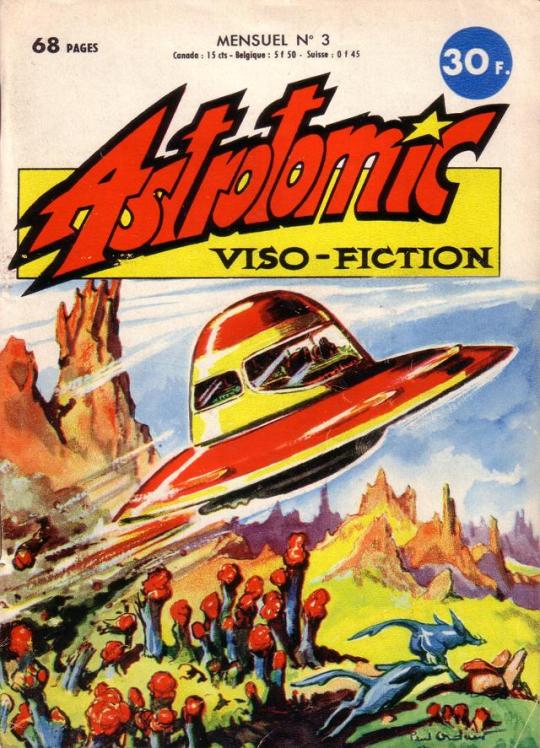
ASTROTOMIC (# 3, Editions Mondiales, 1959)
cover art : Paul ORDNER
French SF Comics. This collection, edited by Cino Del Duca, ran from November 1958 to February 1962 for 39 issues. Then, on #40, mixed with “Aventures Boum” the comic continued till # 49, in December 1962.
Covers were drawn by Paul Ordner, Carlo Marcello and Rick Yager.
The stripes were mostly from England: Ace O’Hara, Capitaine Vega (= Captain Condor), Archie the robot, Rick Random. You could also find an italian serie: Mike en l’an 2000, as well as complete stories signed René Giffey, Bob Dan, Rémy Bourlès or M. de la Pintière (all issued from another Del Duca comic: “L’Intrépide-Hurrah”. All in all: quality stuff that is very purchased and hard to find nowadays.
source:amsaklapper’s collection
#astrotomic#cino del duca#comics#sf comics#cover art#bandes dessinées#fumetti#paul ordner#carlo marcello#rick yager#rené giffey#bob dan#rémy bourlès#m. de la pintière#l'intrépide#hurrah#éditions mondiales
3 notes
·
View notes
Text
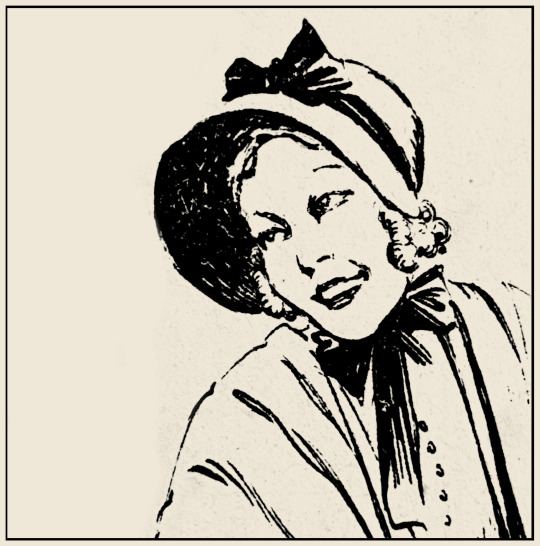




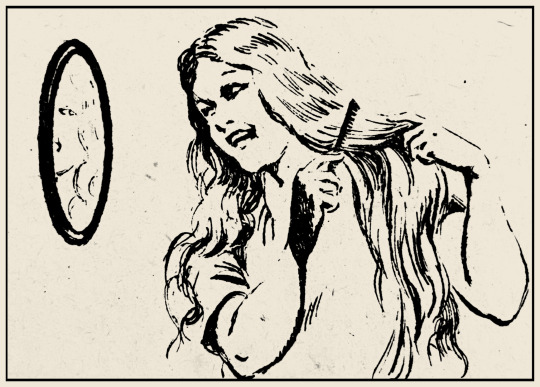


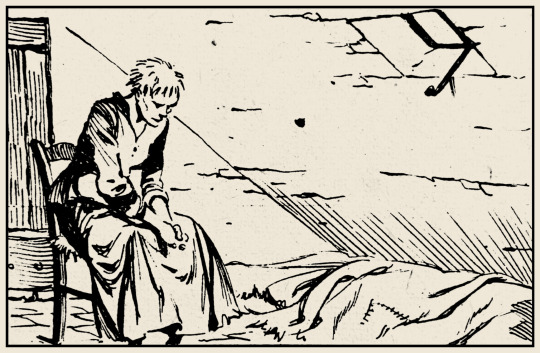




Les Misérables | Fantine's deterioration
Illustrated by Rene Giffey (French comic, 1949)
156 notes
·
View notes
Text
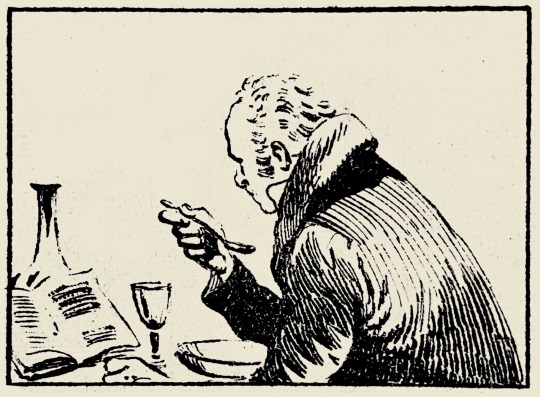
He always took his meals alone, with an open book before him, which he read. He had a well-selected little library. He loved books; books are cold but safe friends. In proportion as leisure came to him with fortune, he seemed to take advantage of it to cultivate his mind.
— Les Misérables, I.V.III
Illustrated by Rene Giffey (French comic, 1949)
160 notes
·
View notes
Text
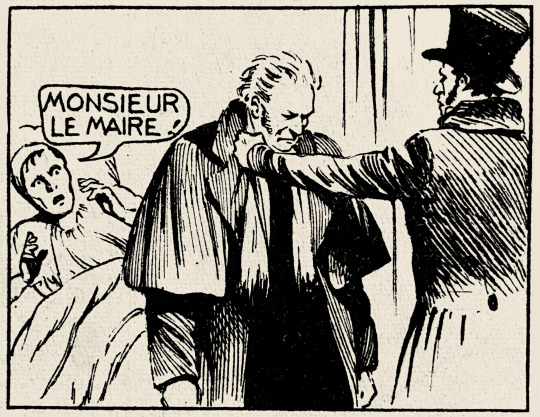



YEAH EXACTLY!
120 notes
·
View notes
Text


He always had his pockets full of money when he went out; but they were empty on his return. When he passed through a village, the ragged brats ran joyously after him, and surrounded him like a swarm of gnats. […] The children loved him because he knew how to make charming little trifles of straw and cocoanuts.
— Les Misérables, I.V.III
Illustrated by Rene Giffey (French comic, 1949)
80 notes
·
View notes
Text



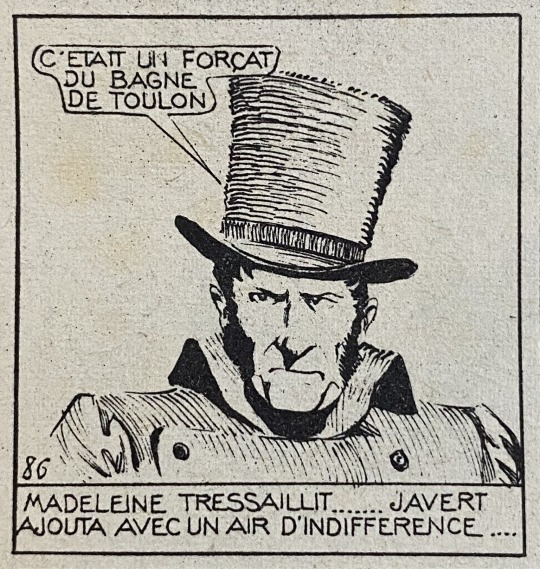





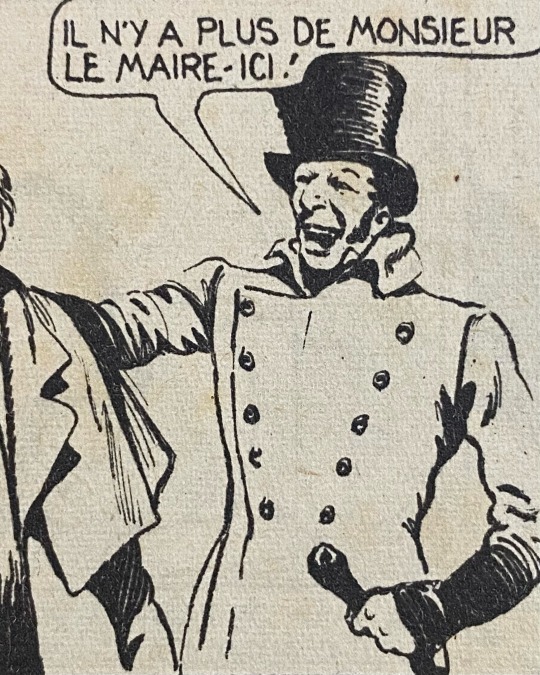
Appreciation post for Javert in this comic bc I like him sooooo much.
120 notes
·
View notes
Text


Les Misérables, French Comic by Rene Giffey (1949)
This part giving the start of his villain era.
80 notes
·
View notes
Text

Les Misérables, French Comic by Rene Giffey (1949)
He looks well for someone who spent 19 years in prison.
54 notes
·
View notes
Text
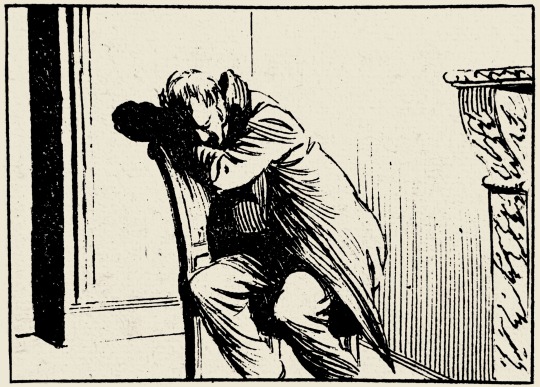
Three o’clock in the morning had just struck, and he had been walking thus for five hours, almost uninterruptedly, when he at length allowed himself to drop into his chair.
— Les Misérables, I.VII.IV
Illustrated by Rene Giffey (French comic, 1949)
58 notes
·
View notes
Text

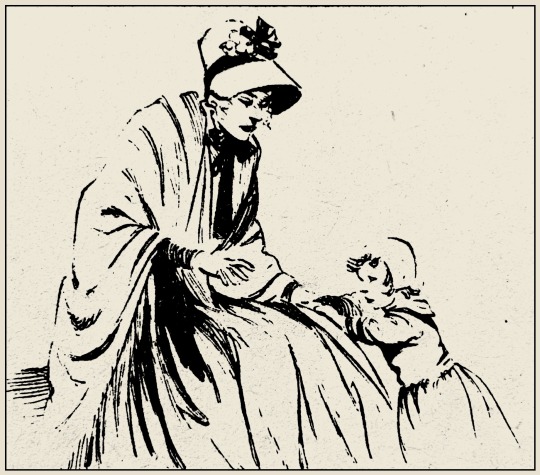
Les Misérables | Fantine & Cosette
(Rene Giffey's French Comic, 1949)
104 notes
·
View notes
Text
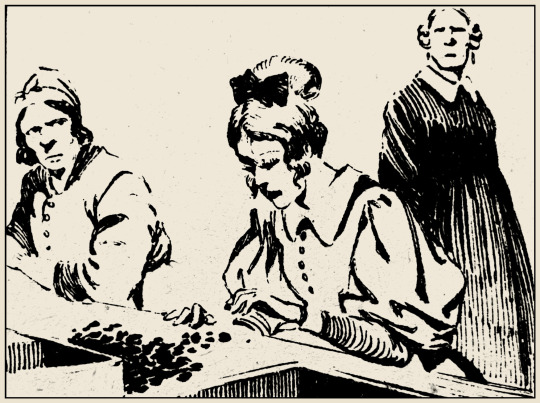
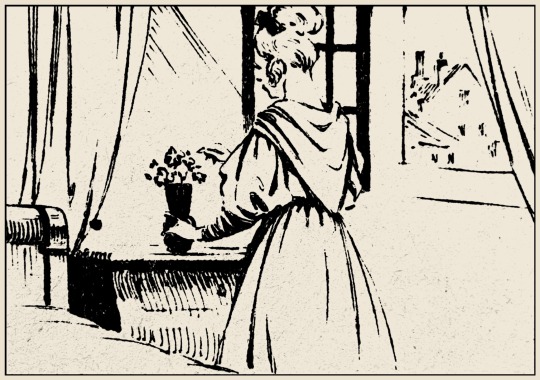


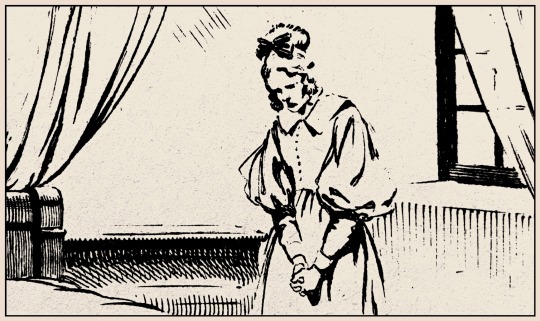
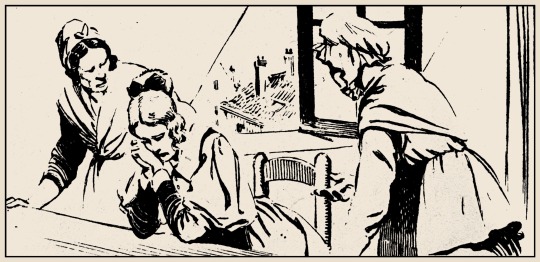
Les Misérables | Fantine
(Rene Giffey's French Comic, 1949)
SHE IS SOOOOO BEAUTIFUL!!
99 notes
·
View notes
Text
No adaptations appreciate the way Fantine hits Bamatabois like the comics :

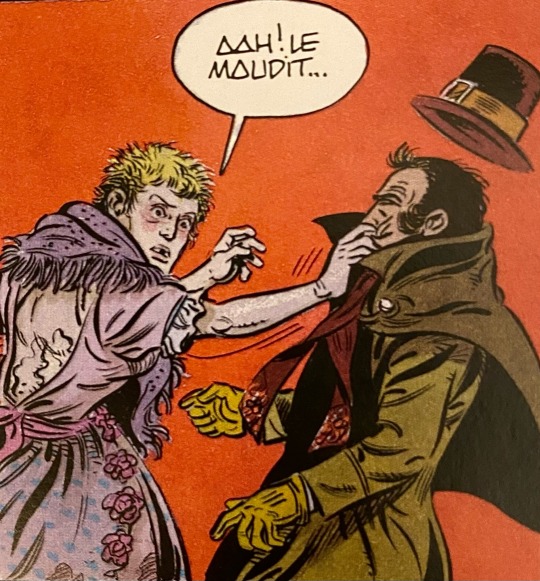
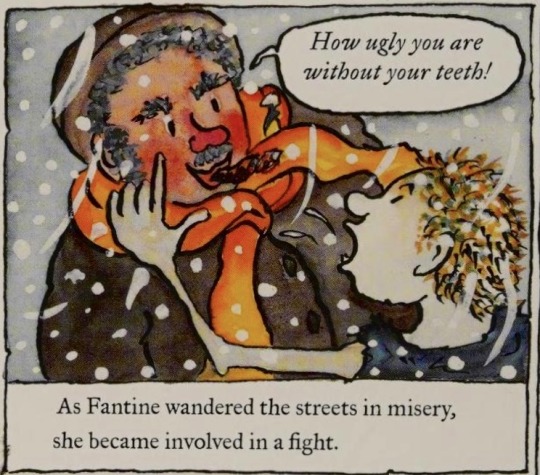
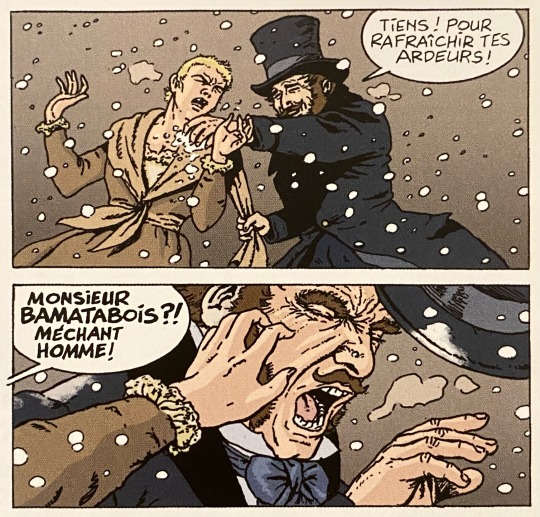

And I’ll add Arai Manga too bc as always it has everything :
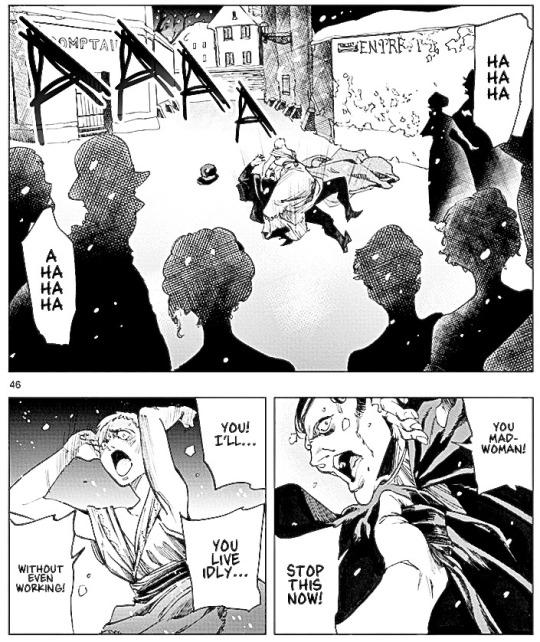

Bonus to make your day better <3
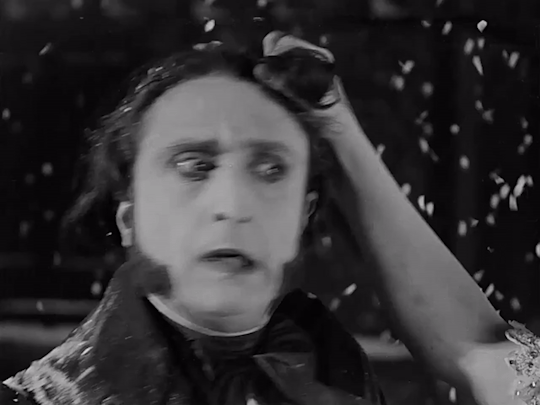
#les miserables#les mis#fantine#Bamatabois#Fantine's Arrest#Classic Illust.9#paape comic#marcia williams#Bardet Comic#Giffey comic#comics#arai manga#lm1925#set of adaptations
147 notes
·
View notes
Text

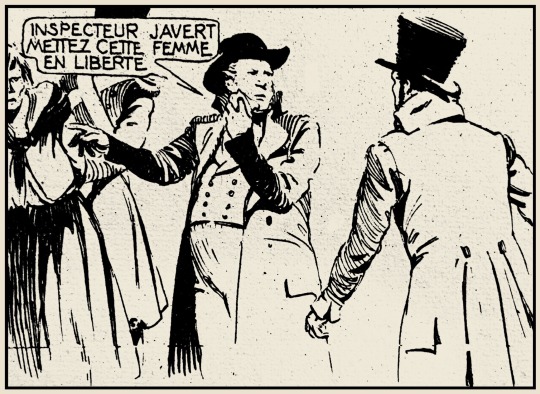
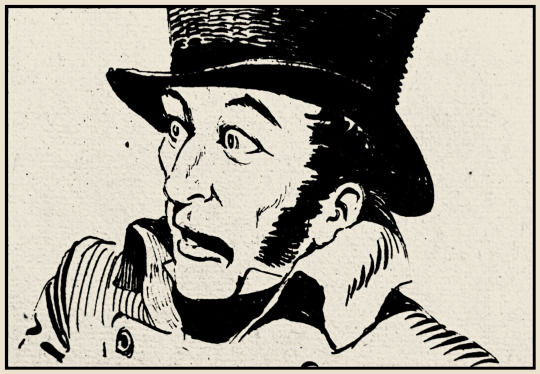
Javert felt that he was on the verge of going mad. He experienced at that moment, blow upon blow and almost simultaneously, the most violent emotions which he had ever undergone in all his life. To see a woman of the town spit in the mayor’s face was a thing so monstrous that, in his most daring flights of fancy, he would have regarded it as a sacrilege to believe it possible.
#les miserables#les mis#javert#jean valjean#fantine#Fantine's Arrest#giffey comic#comics#This part is always hilarious to me#LOOK IT TO HIS FACE
112 notes
·
View notes
Text
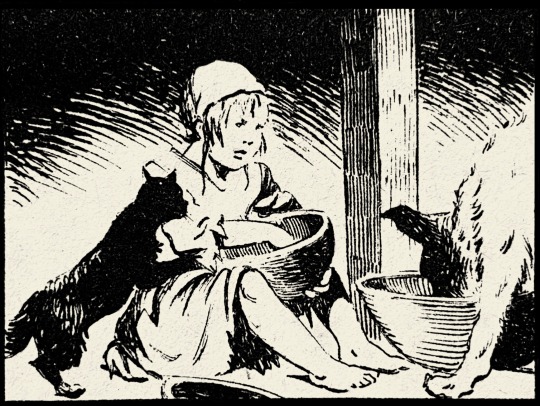
They fed her on what all the rest had left—a little better than the dog, a little worse than the cat. Moreover, the cat and the dog were her habitual table-companions; Cosette ate with them under the table, from a wooden bowl similar to theirs.
— Les Misérables, The Lark
From Rene Giffey's French Comic, 1949
39 notes
·
View notes